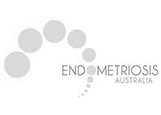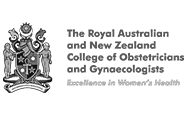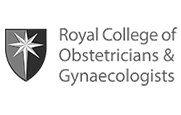Heavy Periods (Menorrhagia)

When is a period considered to be heavy?
Menorrhagia is the medical term for recurrent heavy periods and is a condition that affects one in five women in Australia and New Zealand, with one third requiring treatment. The volume of menstrual loss can be highly variable however a “normal” volume is considered to be around 30-40ml per period (6 – 8 teaspoonfuls). Heavy menstrual bleeding is usually defined as a total menstrual blood loss of more than 80ml, which can be difficult to measure. Therefore the period can also be considered heavy if there is frequent flooding, or menstrual loss unable to be contained by pads or tampons; frequent change of pads more than every 4 hours or more than once during the night, and passing of blood clots larger than 3cm. The average duration of a period is 5-7 days, and can also be considered heavy if the period lasts for more than 8 days. Menstrual loss consists of a mixture of shed uterine lining and blood. When there is excessive menstrual loss, it is mainly due to excessive loss of blood with the telltale sign of large clots in the menstrual loss.
What are the effects of heavy periods?
Excessive menstrual loss can affect your health and general well being and can be a sign of a more serious condition. Excessive menstrual loss can cause:
- Fatigue, lack of energy and shortness of breath
- Difficulty managing menstrual loss with disruption to social, professional and personal activities.
- Disturbed sleep from needing to wake up for pad changes
- Depleted iron stores
- Anaemia (low red blood cell count)
What investigations should I have for heavy periods?
Women with heavy menstrual bleeding should see their family doctor to discuss their menstrual loss and have a thorough physical. This should include pelvic examination with a speculum to check the cervix and ensure that their Cervical Screening Test is up to date. Heavy menstrual loss can affect iron stores and blood count therefore blood tests should be done to check their levels. Thyroid dysfunction and other hormonal conditions can affect menstrual loss therefore they should also be considered. A pelvic ultrasound is often required to investigate possible uterine causes of heavy menstrual bleeding.
Heavy periods are often related to issues with the uterine lining and a hysteroscopy (a telescopic examination of uterine cavity) with an endometrial curetting (a biopsy of the uterine lining) may be required to ensure there is no sinister cause. Just as a Cervical Screening Test assesses for cervical pathology, an endometrial curetting checks for endometrial pathology. Endometrial aspirate is an office-based equivalent of endometrial curetting, which is performed similarly to a Cervical Screening Test. It involves the introduction of a very thin tube into the uterine cavity to obtain the endometrial sample.
What are the possible causes of heavy periods?
Possible causes include:
- Hormonal
- Dysfunctional uterine bleeding (local chemical and hormonal aberration)
- Polycystic ovary syndrome (PCOS) and anovulatory conditions
- Perimenopausal hormonal fluctuations
- Uterine
- Polyps (small growth of uterine lining inside the uterus)
- Fibroid (benign growth of smooth muscle in the uterine wall)
- Adenomyosis (growth of uterine lining into the muscle wall of uterus)
- Hyperplasia or cancer (pre-cancerous or cancerous changes of inner uterine lining)
- Blood disorders
- Inherited bleeding conditions or from the use of blood thinning medications
What treatments are available for heavy periods?
Treatment for heavy menstrual loss depends on a variety of factors including the cause of bleeding, need for contraception, fertility goals and personal treatment preferences. Treatment can be classified into medical and surgical therapies.
Medical treatments:
- Non Hormonal
- Iron supplementation
- Non-steroidal Anti-Inflammatory Drugs (NSAIDs) such as Ponstan
- Tranexamic Acid (Cyklokapron) which helps blood clot more effectively to seal bleeding vessels
- Hormonal
- Oral Contraceptive Pill (OCP)
- Progesterone therapy (oral tablet or Mirena IUS)
Surgical treatments
Surgical treatment is considered when medical treatment is not satisfactory
- Hysteroscopy:
- Polyps and fibroids located in the uterine cavity can be removed through the use of a hysteroscope (thin telescope) introduced into the uterine cavity through the cervix.
- Hysteroscopic resection of endometrium (Ablation). In the absence of uterine pathology such as a polyp or fibroid, shaving of the uterine lining (ablation) can reduce the menstrual loss. This is an option only after further fertility is no longer desired.
- Laparoscopic surgery:
- Fibroid: Fibroids that may be responsible for heavy bleeding can be removed by “keyhole” surgery if the uterus needs to be preserved
- Hysterectomy: Removal of the uterus is a treatment option if all other treatment options have proven to be unsuccessful and there is no wish for future pregnancy. This is a definitive treatment for heavy periods and as the ovaries are not removed, hormonal levels are not affected post-surgery.
Helpful Links
Patient information on “Heavy Menstrual Bleeding” from The Royal Australian and New Zealand College of Obstetricians and Gynaecologists
https://ranzcog.edu.au/womens-health/patient-information-resources/heavy-menstrual-bleeding
Patient information on “Heavy Menstrual Bleeding” from The American College of Obstetricians and Gynecologists
https://www.acog.org/patient-resources/faqs/gynecologic-problems/heavy-menstrual-bleeding















